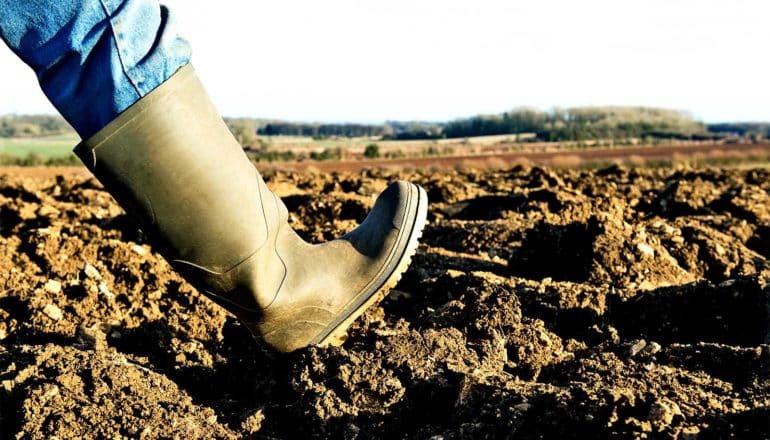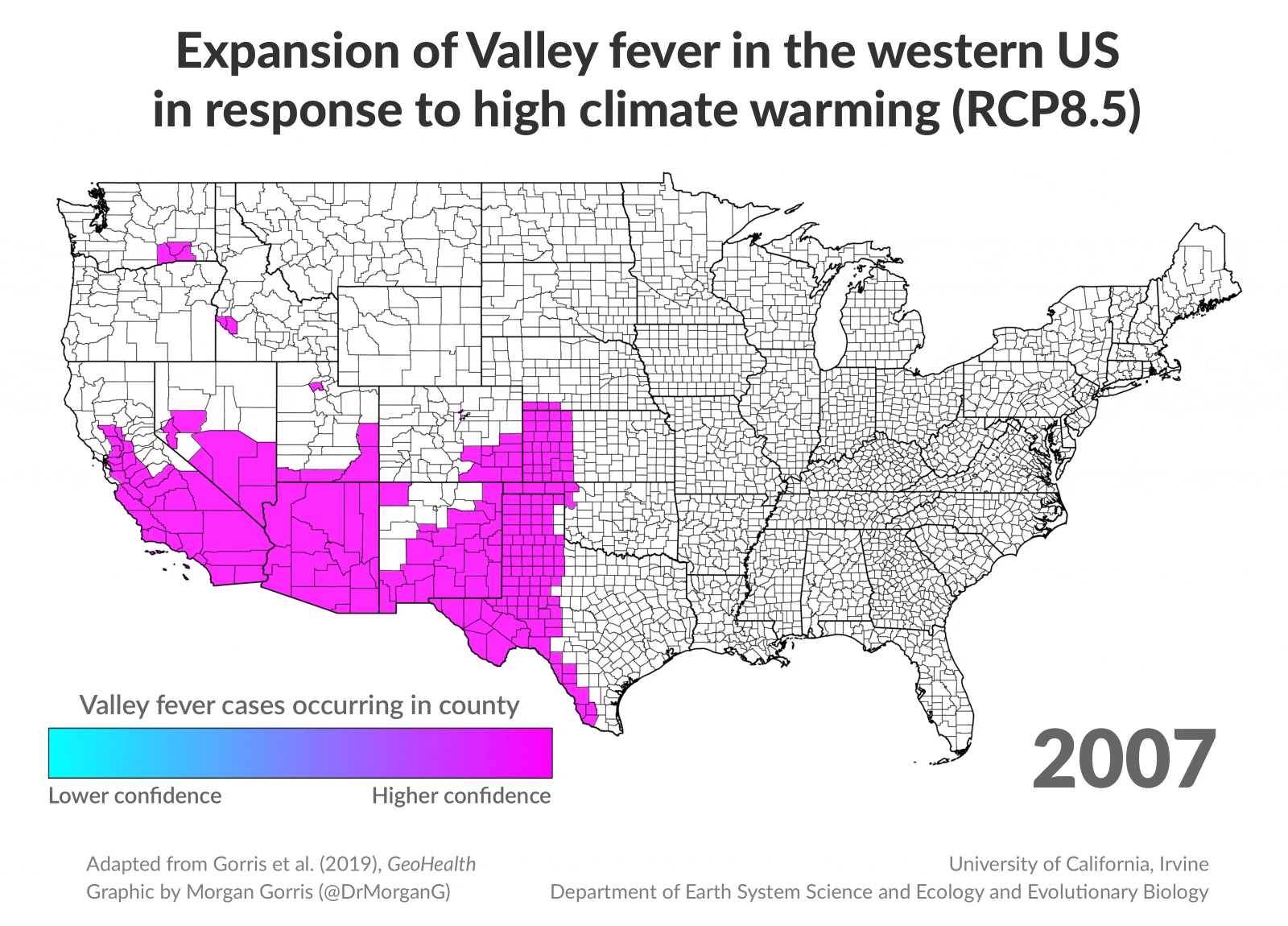
Climate change could cause the range of Valley fever, a potentially deadly fungal infection in the lungs, to more than double in size this century, a new study warns.
Currently endemic to hot and dry regions such as the southwestern United States and California’s San Joaquin Valley, scientists predict it will reach previously unaffected areas across the western US. Valley fever is a burgeoning public health concern because the number of cases in California and other regions has gone up over time.
As reported GeoHealth, researchers claim that in a high-warming scenario, the list of affected states will jump from 12 to 17, and the number of individual Valley fever cases will grow 50% by the year 2100. They project that Montana, Nebraska, North Dakota, South Dakota, and Wyoming will all have counties where Valley fever is endemic. Further, researchers expect the disease to become more widespread in Colorado, Idaho, and Oklahoma.
“The range of Valley fever is going to increase substantially,” says lead author Morgan Gorris, a former PhD student in Earth system science at the University of California, Irvine.
“We made projections out to the end of the 21st century, and our model predicts that Valley fever will travel farther north throughout the western United States, especially in the rain shadow of the Rocky Mountains and throughout the Great Plains, and by that time, much of the western US will be considered endemic.”

Spreading Valley fever
The national Centers for Disease Control and Prevention currently use a Valley fever endemicity map based on a skin-test study conducted on a San Diego naval base in the 1940s. Using this decades-old information as a starting point, Gorris collected health department data on Valley fever cases from hospitals in many Western states.
Then she and her team studied the climate conditions in places where Valley fever is most common. They concluded that counties with more than 10 cases per 100,000 people all had average annual temperatures above 10 degrees Celsius (50 degrees Fahrenheit) and rainfall below 600 millimeters (23.6 inches).
“Morgan made this model based on temperature and rainfall; it provides similar but not exactly the same projections of where the CDC says Valley fever is,” says coauthor James Randerson, professor and chair in Earth system science. “In fact, we think it may guide efforts to build a better contemporary map of where the disease poses a threat to public health.”
The study really focuses on predicting the expansion of Valley fever. Gorris says. “Both temperature and precipitation are expected to change considerably in the western US in future decades, but it’s the increasing temperatures in already dry states that allow the disease to spread.”
Who’s most vulnerable?
At present, parts of California and the Southwest are particularly suited for nurturing the fungus, scientifically known as Coccidioides. A smattering of winter rain on dry ground enables fungal growth beneath the surface. When the soil dries, the elongated strands of fungus break apart into spores, some as small as 2 microns in diameter.
If earth-moving equipment or the boots of workers agitate them, the particles can loft into the air and people in the area inhale them. Laborers in construction and agriculture, as well as prisoners paving roadways and fighting fires in remote locales, are particularly susceptible to breathing in the airborne spores.
Once in the lungs, the fungus transforms from strand-like into spherules, tiny balls that grow and spread in pulmonary tissues. About 40% of people who inhale the spores become sick.
Early symptoms of Valley fever are similar to those of the flu: cough, fever, chills, and night sweats. For this reason, experts often misdiagnose the disease and it can go untreated. In advanced cases, the fungus can move from the lungs to other parts of the body, potentially causing skin lesions that can result in limb loss.
In extreme cases, the disease can travel to the brain, leading to swelling and death. Roughly 5% of people with Valley fever will have a severe form of the disease, and 1% will die. Health experts consider pregnant women, the elderly, and people with HIV the most vulnerable to severe forms of Valley fever. Filipinos and those of African descent are also at heightened risk. The disease disproportionately affects people in low-income communities, Randerson says.
“By 2100, for a business-as-usual scenario in which we do not take serious action to limit climate change, we would predict a doubling of the area where this disease is present,” he says. “It’s a huge expansion and especially worrisome because Valley fever is going to impact previously untouched communities throughout the West.”
The US Department of Defense, the National Science Foundation, the US Department of Energy, NASA, and the Gordon and Betty Moore Foundation funded the work.
Source: UC Irvine
The post Climate could push fungus infection from dirt north appeared first on Futurity.
from Futurity https://ift.tt/2Ifce4X
No comments:
Post a Comment